-
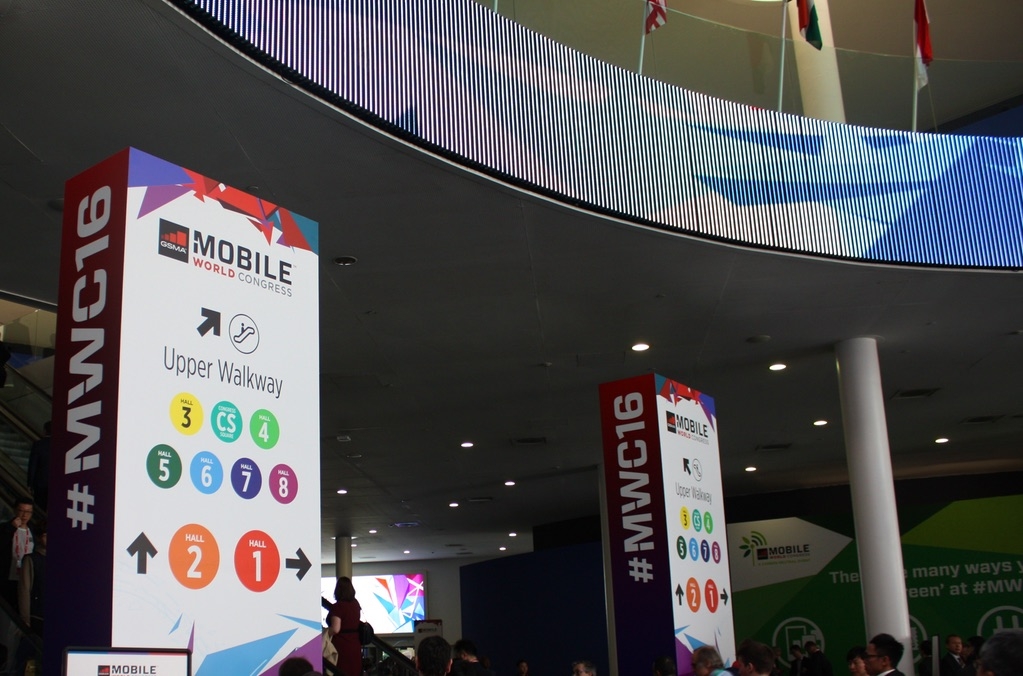
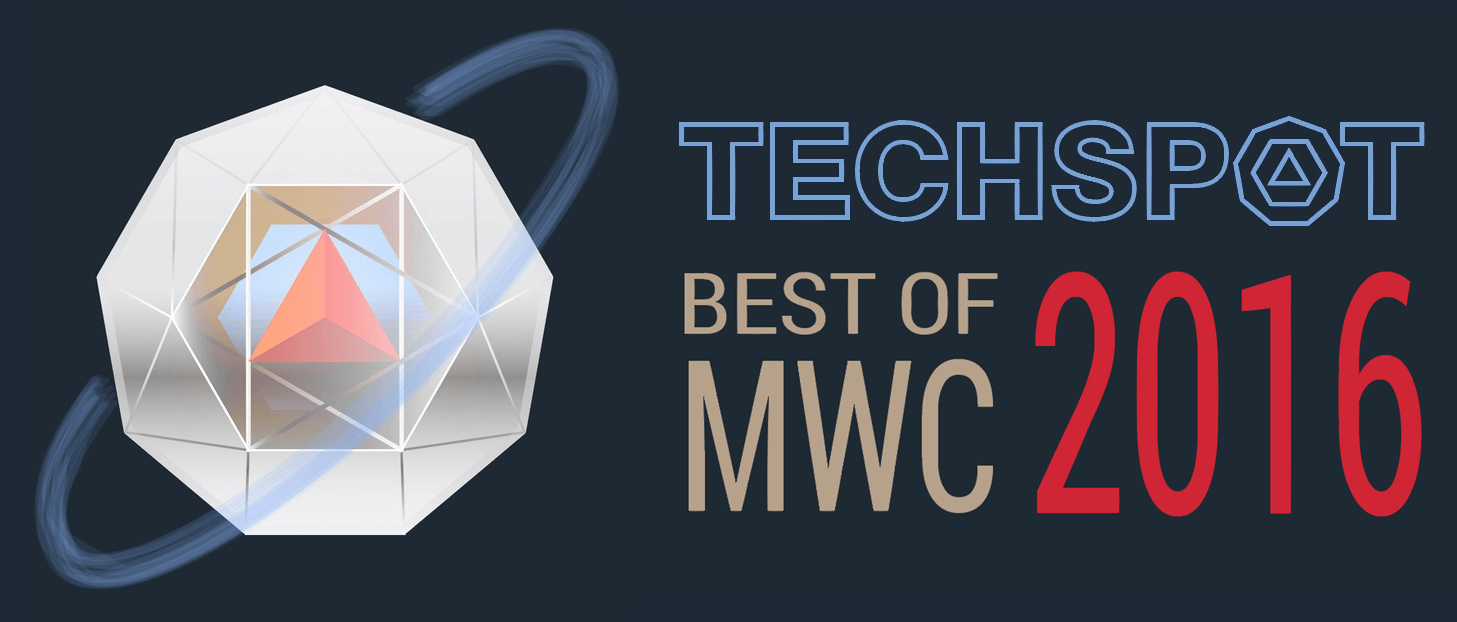
And that's a wrap folks! It's been a busy week as more than 90,000 people stormed Barcelona to catch the latest mobile announcements and innovations. This year's Mobile World Congress brought us new smartphones and hybrid devices, including a modular design from LG that we're curious to find out whether it catches on with the public.
Virtual reality had a big presence at the show as expected, and we're really excited about its potential if the HTC Vive is anything to go by – yes, it's $799 and yes (!), it's that good. And of course there where plenty of other platforms and solutions being showcased for wearables, IoT, and the next generation of cellular networking.
Lets take a look at the highlights of the four-day event.
-
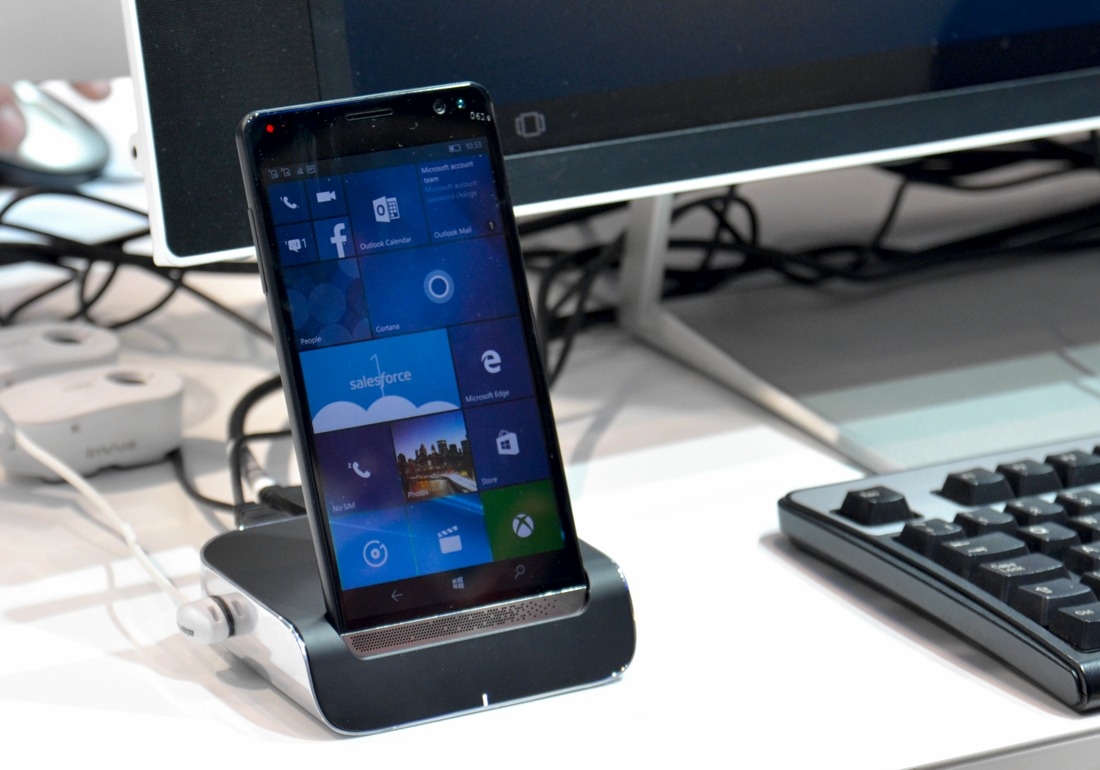
HP Elite x3
One of the biggest surprises at MWC, HP launched a new Windows 10 Mobile device known as the Elite x3. Designed primarily for enterprise and business applications, the handset is packing a monster spec list: Snapdragon 820, 6-inch 1440p display, iris and fingerprint scanners, a 16-megapixel camera, and a 4,150 mAh battery. But it's not just these specs that make it a far more compelling device than anything that's come from Microsoft in recent months, it's the way HP has put Continuum at the center of this smartphone.
The Elite x3 is designed to be docked, turning a simple smartphone into a capable desktop PC, which HP says is possible thanks to the power of the Snapdragon 820. There's also "mobile extender" that connects wirelessly to the phone, allowing you to basically convert it into a 12.5-inch laptop with monster battery life. Apps may be a problem, even with HP's cloud-based virtualization system, but it's easily the best new Windows Phone in years.
-
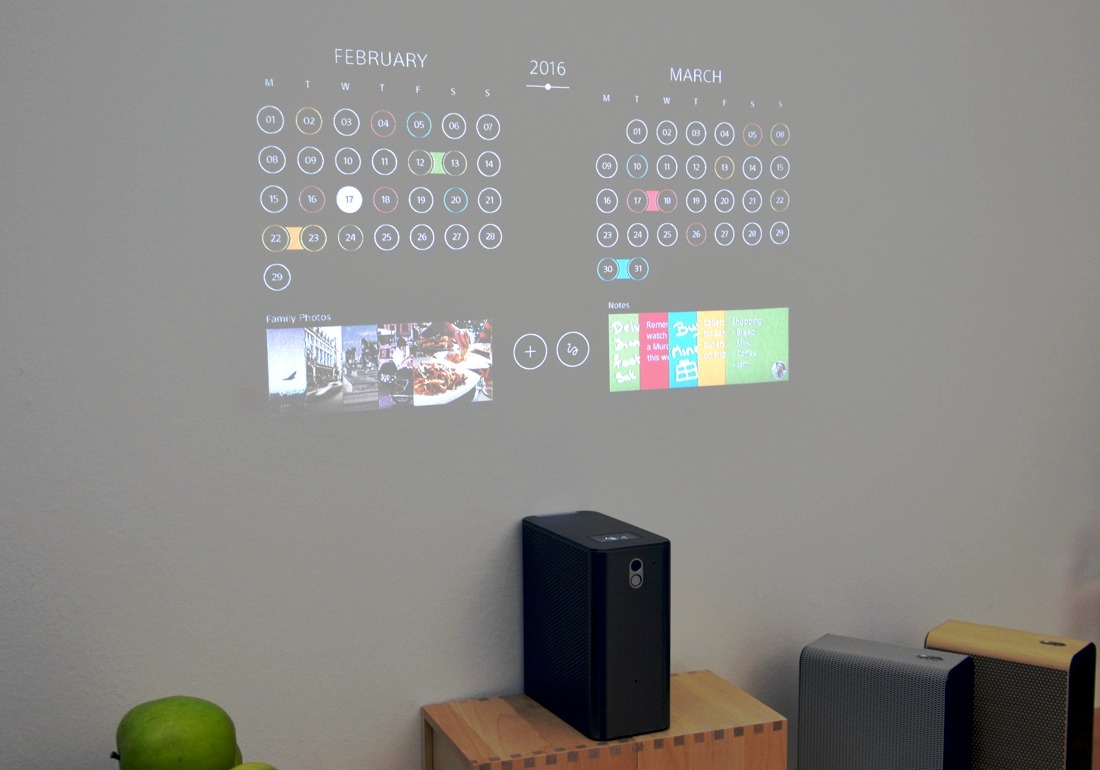
Sony Xperia Projector Concept
The Xperia Projector may not be coming for a few years, but it was the coolest thing Sony was showing off at their MWC 2016 booth. Essentially a central hub for communications within a home, the Projector displays things like calendars, notes, weather, pictures, video calls and more on whatever wall you desire, complete with touch interactivity that's far cooler than a simple touchscreen.
Sony emphasized this product is still a "concept", and the demo at MWC was limited in features and performance, however it has the ability to become a really awesome product in the near future. Imagine waking up, checking your events and meetings for the day on your wall-projected assistant, before getting a quick weather update as you head out the door, all without the bulk and ugliness of a wall-mounted display.
-

Noveto Private Sound Technology
Developed by Israeli firm Noveto, this incredible piece of engineering can steer and focus audio signals so only a specific user can hear them without them needing to wear any form of external hardware.
By scanning a user's features, the 3D sensors can track a user's head as they move, sending the audio signals only to that person. I was mildly skeptical about the whole thing, but after trying it out, I was convinced of what an amazing piece of tech Noveto has built. No matter where I moved my head, I was the only person who could hear the audio track - it could even be directed into just one ear.
There are so many possible applications for Private Sound: TVs, gaming, IoT, general communications, PCs, services, smartphones, and so on. Noveto believes it will be available in the next 12 months, and it will no doubt grab the public's interest. It's not a surprise that several big names in the industry are already showing interest in Noveto's system.
-
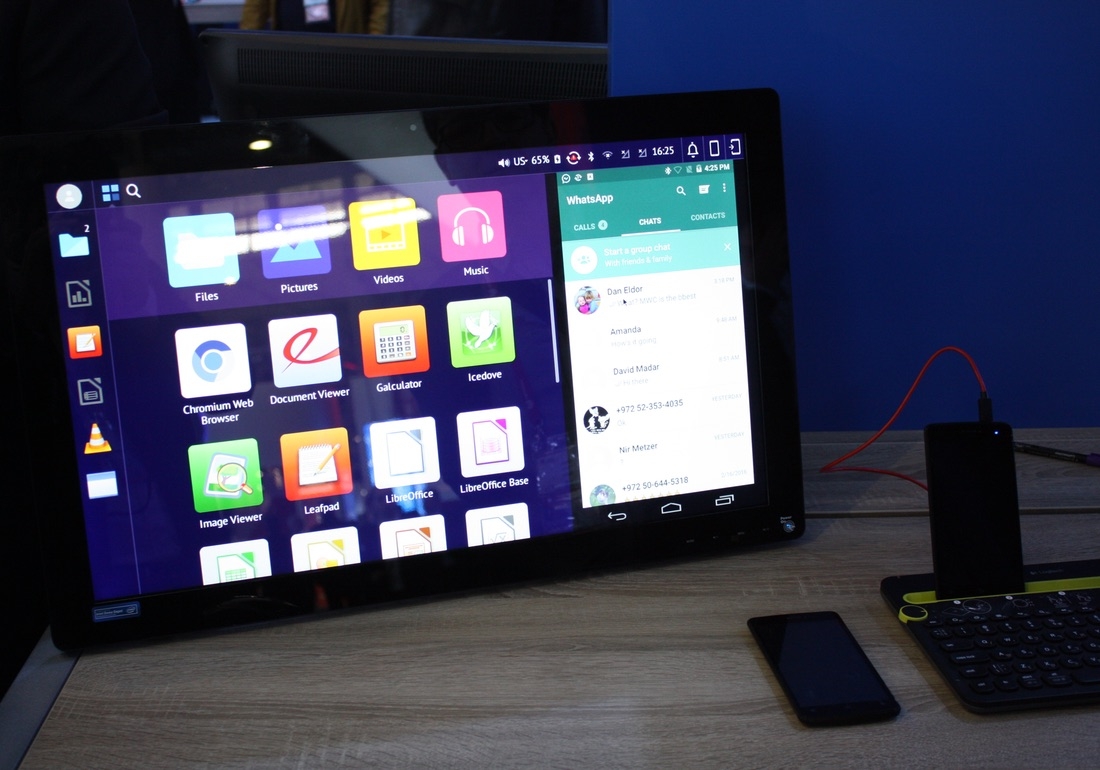
Intel Atom X3 Linux "Big Screen Experience"
A smartphone that can be connected to a larger screen and keyboard and act as a full PC. It's been done before to an extent, yes, but not with great results partly because Android is not optimized for desktop work and because SoCs were too slow, but that's not the case anymore.
Microsoft has been touting Continuum since last year's Windows 10 launch but only recently it seems to be panning out (see HP's Elite x3), however Intel has a different take on the matter.
They showed me a prototype smartphone powered by an Atom X3 SoFIA SoC that Intel says could be sold on developing markets for anywhere between $70 to $130. The phone was running Android but when connected to a larger screen (monitor or TV) via MHL/HDMI cable, it turned the phone into a fully fledged Linux PC running alongside Android OS.
Both operating systems share the same kernel, just running different stacks. So in the Linux desktop side you can browse the phone's file system, view photos or watch videos taken with the phone's camera and manipulate file and folders as you'd normally do on a desktop environment. You can run the desktop full screen and multitask normally. As part of the demo they played a 720p video using VLC and opened documents in LibreOffice. All this happened while the Android environment was live on the side of the screen showing notifications and running Whatsapp.
Now here comes the tricky part, Intel doesn't plan to sell phones anytime soon, rather this is a technology showcase to push their Atom X3 system on a chip, waiting for a manufacturing partner to raise their hand, adopt the technology, and sell it to consumers.
-
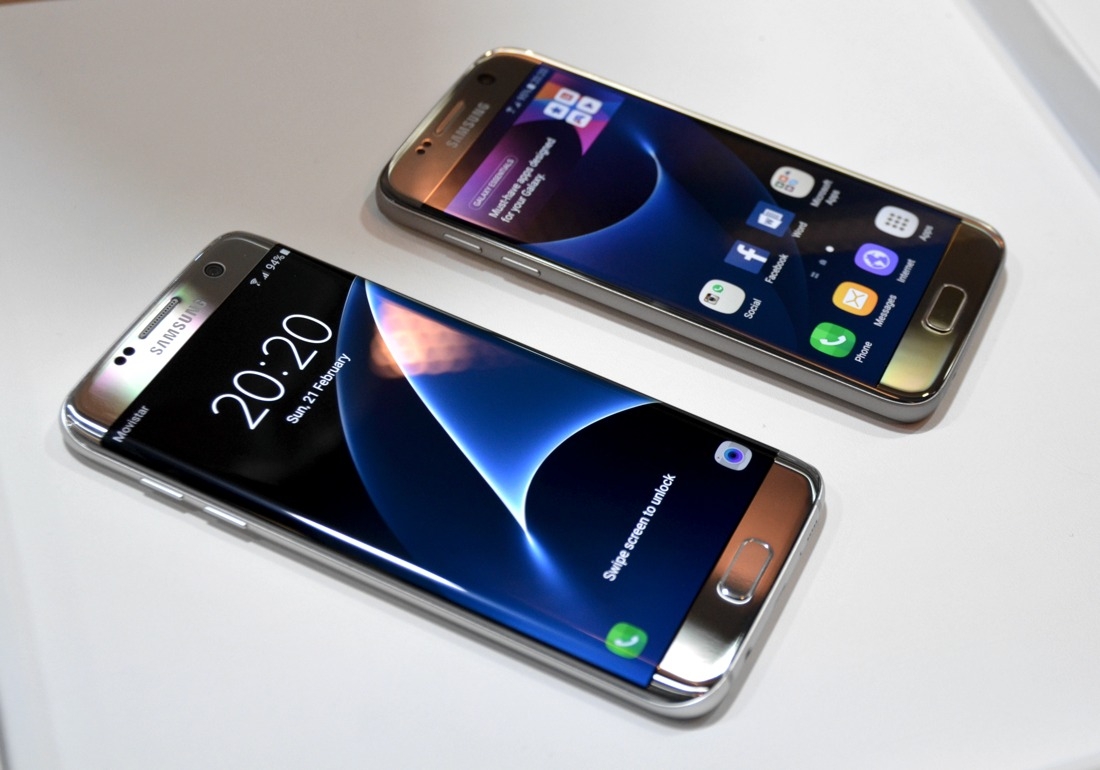
Samsung Galaxy S7 Edge
The most anticipated release of the show, the new Galaxy S7 line follows last year's models look and feel with a beautiful metal and glass body, however it's the small improments that count and make Samsung's 2016 flagship a worthy contender if you want the best smartphone money can buy in 2016.
The S7 Edge is now a bit larger than the standard model at 5.5" (Always-On, Quad HD Super AMOLED display) but held in hand it doesn't feel at all massive. It's very svelte due to the rounded screen and perhaps most importantly, it grips really well due to a refined rounded back. Under the hood, top of the line specs include a Snapdragon 820 SoC, 4 GB of RAM, 32GB or 64 GB of internal storage and a microSD slot that can take up to 200GB of extra memory. The S7 Edge is IP68 waterproofed, can be charged wirelessly (the charging dock is inexpensive), and to top it all off, it makes great use of its larger footprint by using a large 3,600mAh battery.
Any gripes we had with last year's S6 Edge appear to have been addressed, except perhaps for TouchWiz UI which we still don't prefer versus Android's stock UI.
The Galaxy S6 remained one if not the top phone camera last year and Samsung is bound for a repeat with improvements in this front as well. A 12-megapixel 'Dual Pixel' camera with f/1.7 aperture lens and optical image stabilization as well as a 5-megapixel selfie camera, also with an f/1.7 aperture lens for improved performance in low light situations.
The new Galaxy S7 Edge will become available in early March with carriers already accepting pre-orders which will get you a free Gear VR and possibly a microSD card or some other bonus offer. It's $200-300 on contract and almost $800 to buy outright which is a high price of admission but if you want the best inside and out, this might be it.
-
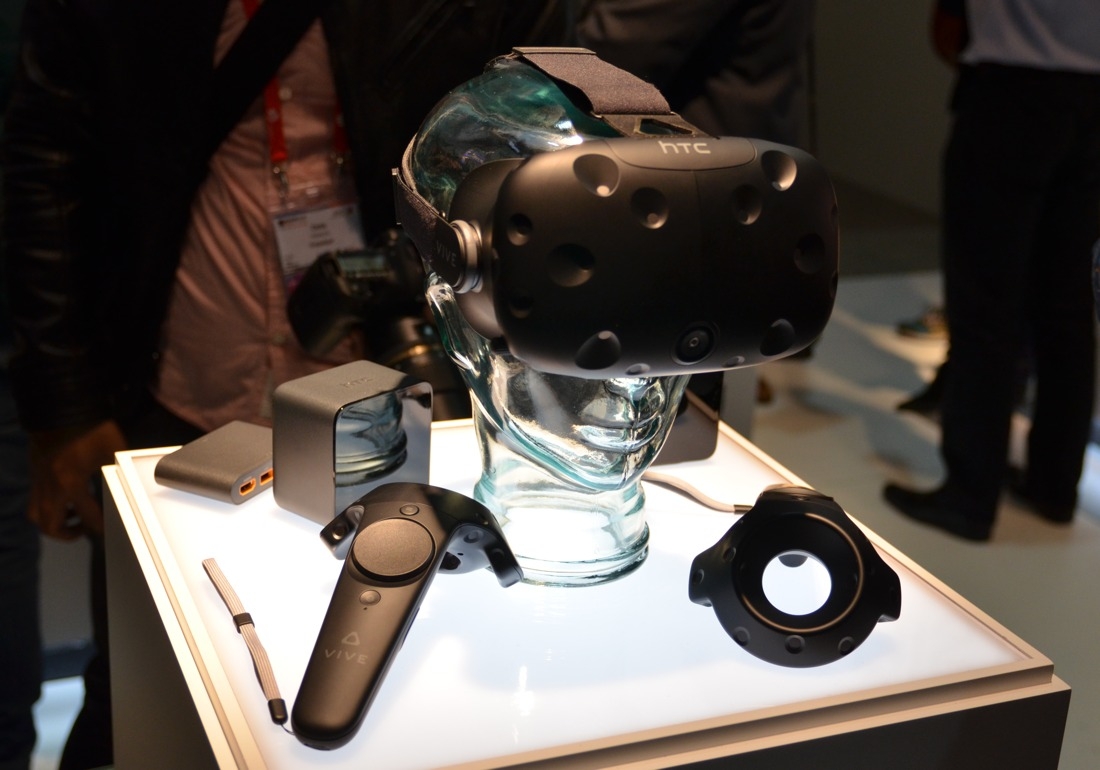
HTC Vive
Virtual Reality is about to take off, and the biggest battle will be between the two big headsets - the HTC Vive and Oculus Rift. I tried the Oculus last year, but after playing an extended demo on HTC's device yesterday, I know which one my money's on to come out on top.
The sheer awe I felt when I found myself walking around a sunken galleon reminded me of the first time I played a video game as a kid, or my first look at an HD TV; it simply takes your breath away. This final version featured a slightly redesigned head strap, which was very comfy, and some improvements to the lenses' focusing mechanism.
The Chaperone system - stopping you from walking into a wall - is fantastic, the controllers feel balanced, and the immersion unparalleled. The few caveats - best used in a larger room, trailing cables - don't detract from an experience that has to be tried to be believed. It may be $200 more expensive than the Oculus but, from this demo, I think it's worth it.
-
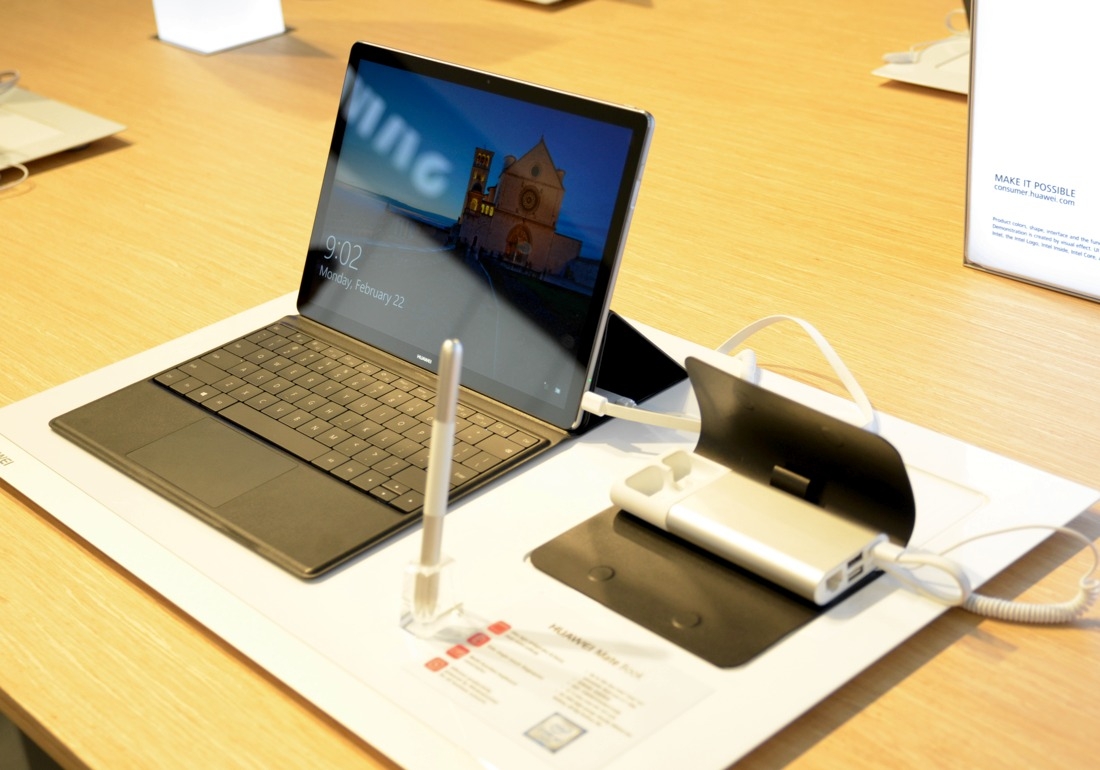
Huawei MateBook
Huawei announced the MateBook at MWC - its first Windows 2-in-1 - as a direct competitor to Microsoft's Surface and the iPad Pro. The company really pushed the MateBook's stylish aesthetics at the company's press conference. Its all-metal unibody chassis, curved edges, 6.9mm profile, 640-gram weight, and chamfered buttons give the device an incredibly premium feel. Just by holding the MateBook you can tell it's a top quality product.
The 12-inch, 2560 X 1440 IPS LCD screen certainly looks sharp and clear, and Huawei proudly showed off the MateBook's stylus at the event - the $59 accessory has over 2048 levels ofsensitivity and doubles as a laser pointer.
The keyboard folio seems to be the MateBook's only real issue; it may have the advantage of connecting via a pin connector rather than Bluetooth, but it does feel pretty spongy and comes with some tightly packed keys. But it might just take a while to get used to it. Despite the minor keyboard issues, the MateBook's estimated 10-hour battery life, Core M processor range, and aggressive pricing could ultimately see it making a real mark in the ever-growing 2-in-1 market.
-
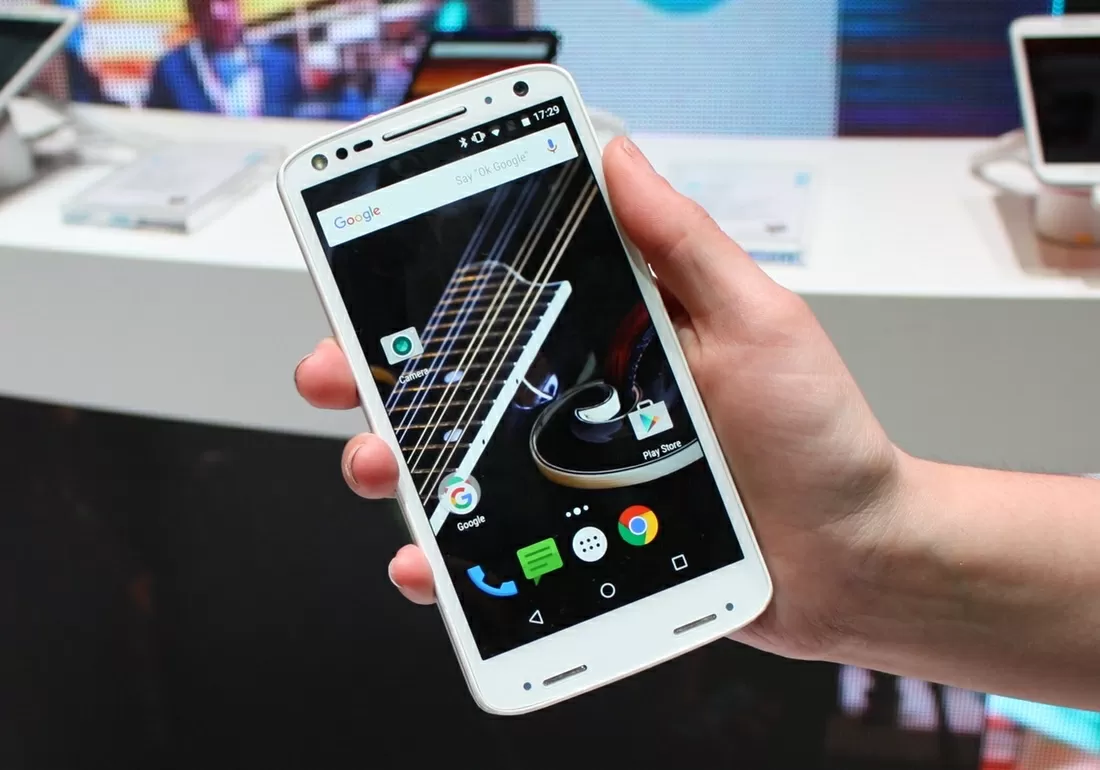
Lenovo Moto X Force
Lenovo was showing the Moto X Force (also known as Droid Turbo 2) alongside the popular and affordable Moto G, asking bystanders to feel free and drop the X Force onto a slab of marble to see how it wouldn't break. And so I did, twice. It was about 5pm during the first day of the show and the person holding the phone assured me the same handset had been abused since earlier that morning.
Now, from the get go we'll tell you, the Moto X Force is not the phone for everyone but that shatterproof display certainly offers a nice alternative for those in need of a rugged phone (without adding an ugly protective case). Perhaps in a few years this same technology will be refined and made more affordable so most handsets can get this kind of shock resistance.
Otherwise, the Moto X Force is a well-rounded phone featuring a 5.4-inch AMOLED display (2,560 x 1,440, 540 PPI), a Snapdragon 810 SoC, 3GB of RAM, and 32GB or 64GB of internal storage expandable via microSD card slot. Other goodies include a 21-megapixel camera that can record 4K video at 30FPS, dual-LED flash, a 5-megapixel front camera with a wide-angle lens, dual-band 802.11 a/b/g/n/ac Wi-Fi with MIMO, Bluetooth 4.1 LE and NFC.
Inside is a massive 3,760mAh battery that can be fast charged using Motorola's TurboPower charger, supplying up to 13 hours of battery life in 15 minutes according to the spec sheet. The phone is only water resistant, meaning it cannot be submerged, maybe next time.
The Moto X Force was released in December and is hitting a few select markets this quarter.
-
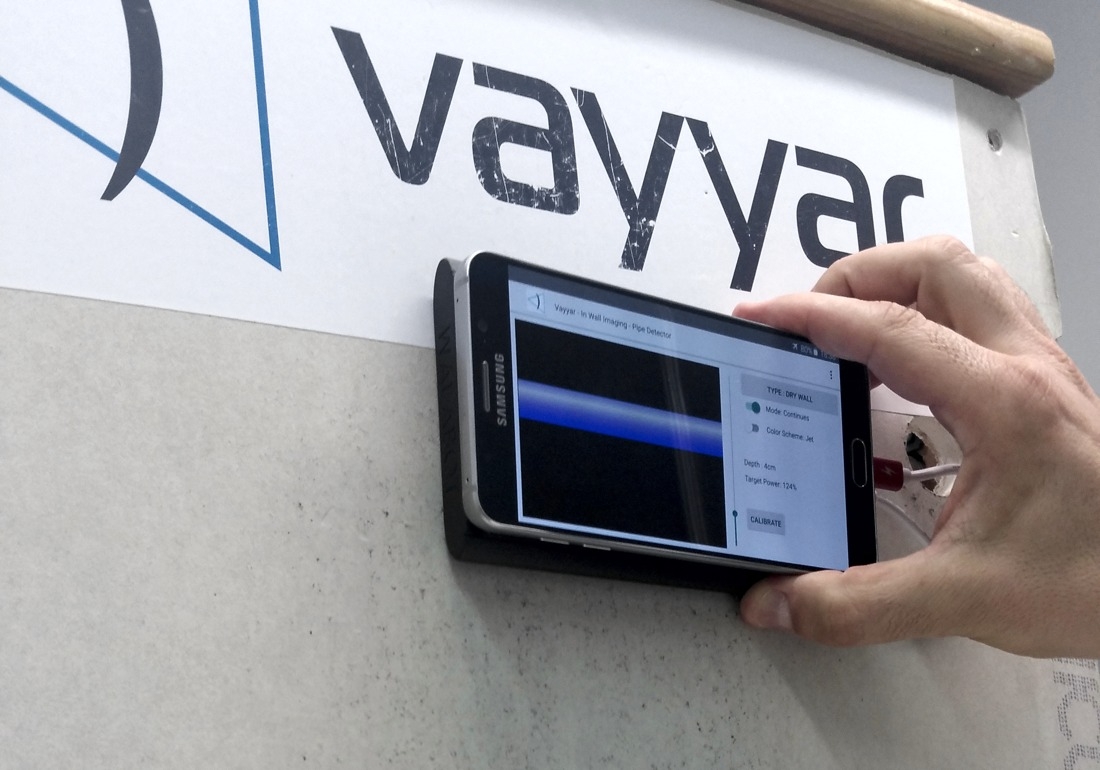
Vayyar Walabot handheld 3D imaging system
One of the most innovative products spotted at MWC was Walabot, a consumer version of Israeli-based Vayyar's 3D imaging system. Walabot can be attached to a smartphone magnetically and allows the device to see through objects, liquids and materials. An extremely useful tool for those in the construction trade and people doing some home improvements.
But the Walabot's use isn't limited to making sure you don't put a nail through a hidden pipe; it's also a people and movement tracker, a robot vision enhancer, and a speed monitoring device. Thanks to the Walabot API that will be made available to the public in April, the sheer number of applications for the device is incredible. And after seeing the Walabot in action (showing me my hand through a wall and then a table via the attached smartphone) I'm confident this is a product that will soon be generating a lot of public interest.
-
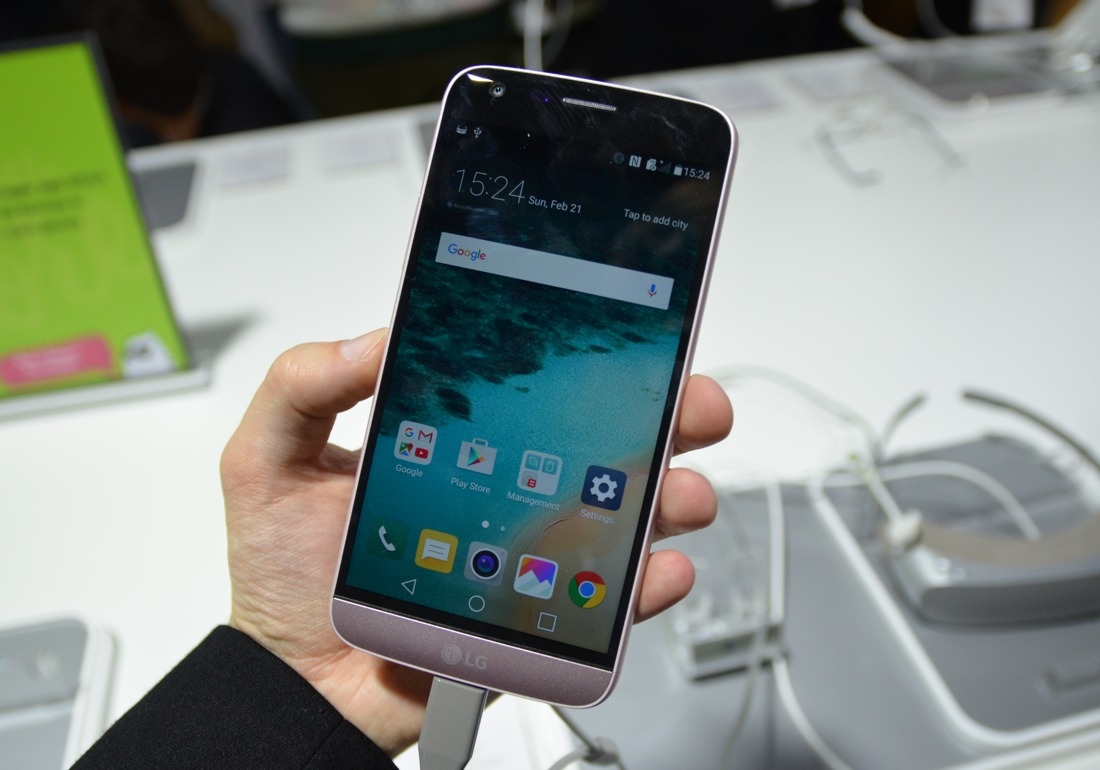
LG G5
There's a lot to like about the LG G5. The new metal unibody design is a significant improvement over the previous generation, providing a premium look and feel that has historically been absent from LG's top-tier smartphones. On top of this, the curved glass front panel feels great, as do the rounded edges. Perhaps the biggest new feature is the removable battery, which has been integrated into the handset through a unique slot-loading mechanism. LG's accompanying accessories for the slot aren't particularly impressive, but some users will certainly appreciate having the ability to swap out batteries on the go.
On top of high-end hardware like a Snapdragon 820 SoC and 5.3-inch 1440p display, LG has crammed in two cameras on the back of this flagship: one 16-megapixel f/1.8 camera for 'normal' shots, and another 8-megapixel f/2.0 camera with a wide 135-degree field of view. It's a cool inclusion to the camera system, and certainly one to explore further when the device launches sometime in April.
-
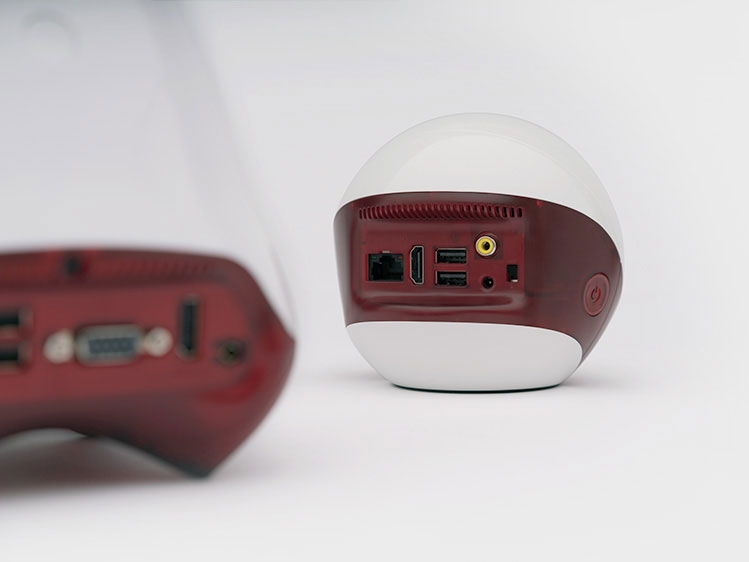
The endless PC
Well over half the world's population doesn't have access to a computer, usually due to their prohibitive cost, which is where the endless mini comes in. This Linux-based desktop PC made quite a splash at CES, and it gained a lot of attention at MWC, too. Aimed at developing markets, the $79 endless mini is powered by an ARM Cortex A5 processor and comes in 24GB SSD and 32GB SSD versions.
The most interesting feature about the mini, however, is that it's 'internet optional,' meaning that while it does feature an Ethernet port/WiFi, it's also preloaded with offline versions of Wikipedia articles, educational videos, and over 100 apps. These apps are updated once the mini is connected online.
The Endless may not be the number one product on an average consumer's must-buy list, but it's an amazing way to get PCs and educational software into the hands of those who don't normally have access to such things. The mini showed its potential to really change people's lives for the better at MWC.
-

Caterpillar S60
We revealed the Caterpillar S60 last week on TechSpot. It may not have the killer features or top-end hardware found in upcoming smartphones such as Samsung's S7 or LG's G5, but it does have one thing they don't: an integrated thermal imaging camera.
I had a brief hands-on with the S60 at MWC and it's easy to see how the device has captured the imagination of consumers. Even Caterpillar is surprised at the amount of interest it has received in a smartphone aimed at those in industries such as construction and law enforcement.
In addition to Flir's Lepton sensor, the S60 feels so tough that you could probably hammer nails into a wall with it. Its specs aren't exactly spectacular, but they're certainly better than a lot of mid-range devices. Plus, it's the world's most waterproof smartphone.
-
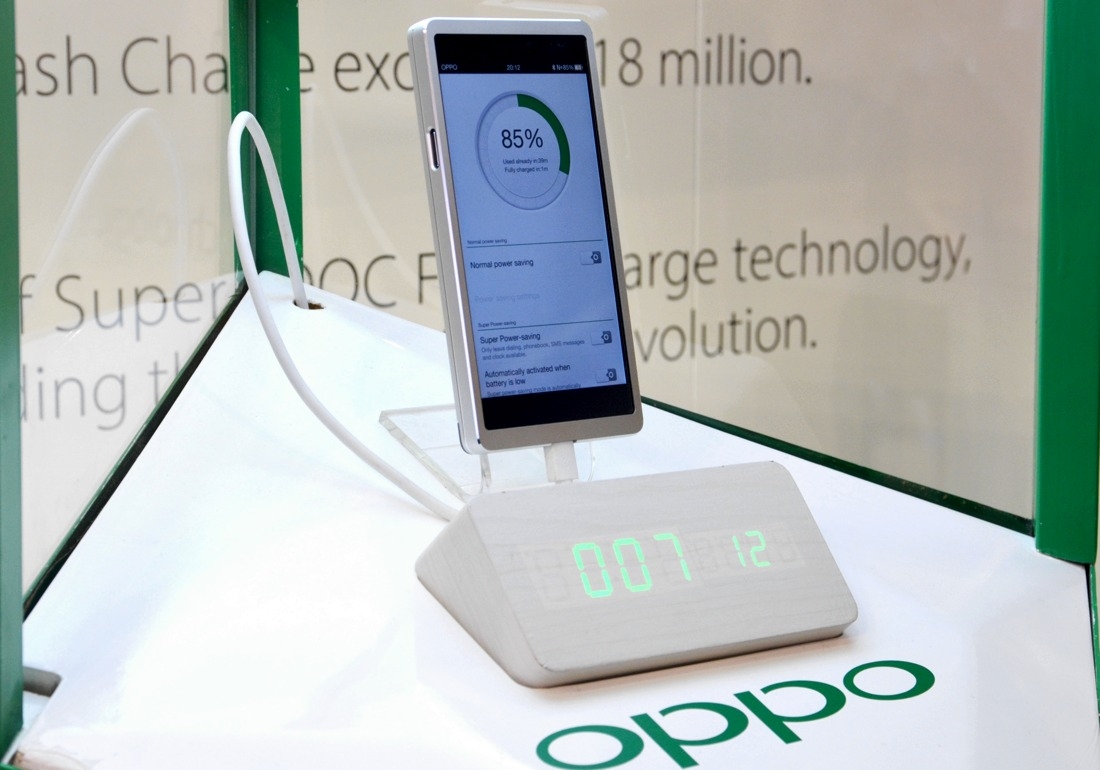
Oppo Super VOOC
Oppo's Super VOOC fast charger is another product that may not reach consumer devices for another year or so, but it has incredible promise. Oppo claims it can charge a 2,500 mAh battery from zero to 100 percent in under 15 minutes, which is more than twice as fast as Qualcomm's competing Quick Charge 3.0 spec. In a demo on the MWC show floor, a device was visibly charged from zero to 85 percent in just 7 minutes, impressing everyone at their booth.
The benefits to quick charging are massive, and negate some of the issues with short battery life that plague most current smartphones. Running out of battery mid-way through the day? Just plug it in for 10 minutes and you're good to go with a nearly full device. Oppo's Super VOOC tech isn't expected to be seen outside of their own smartphones, but it certainly will be a selling point when it becomes available.
